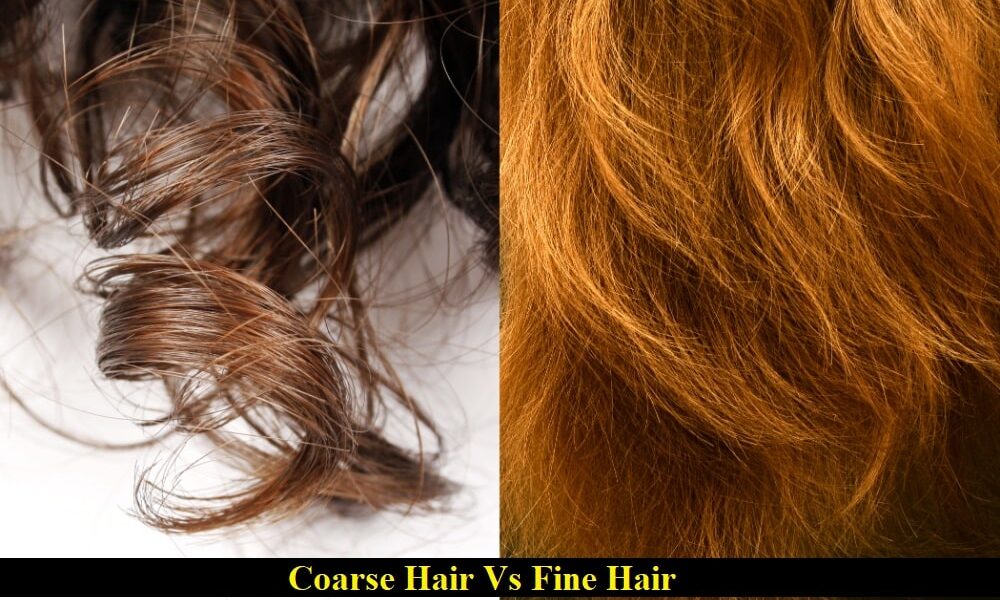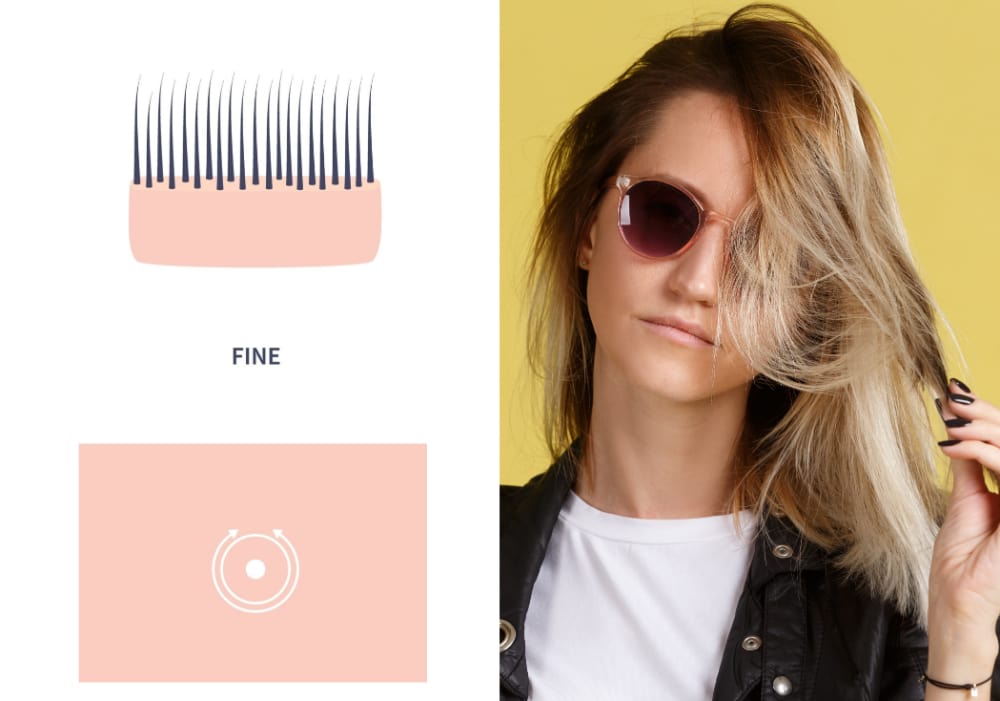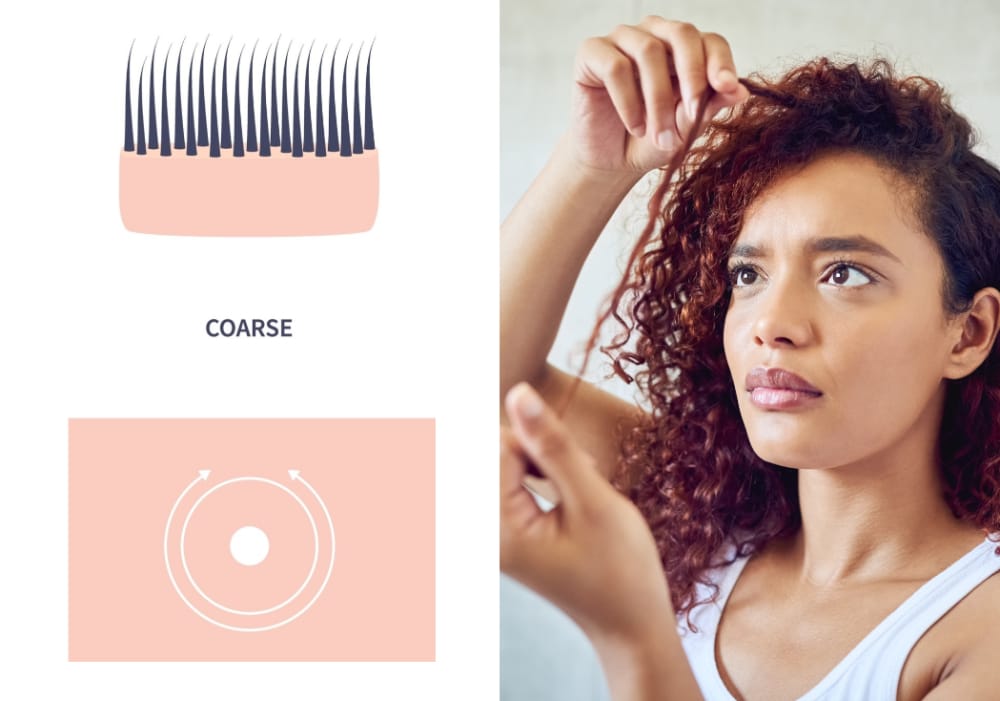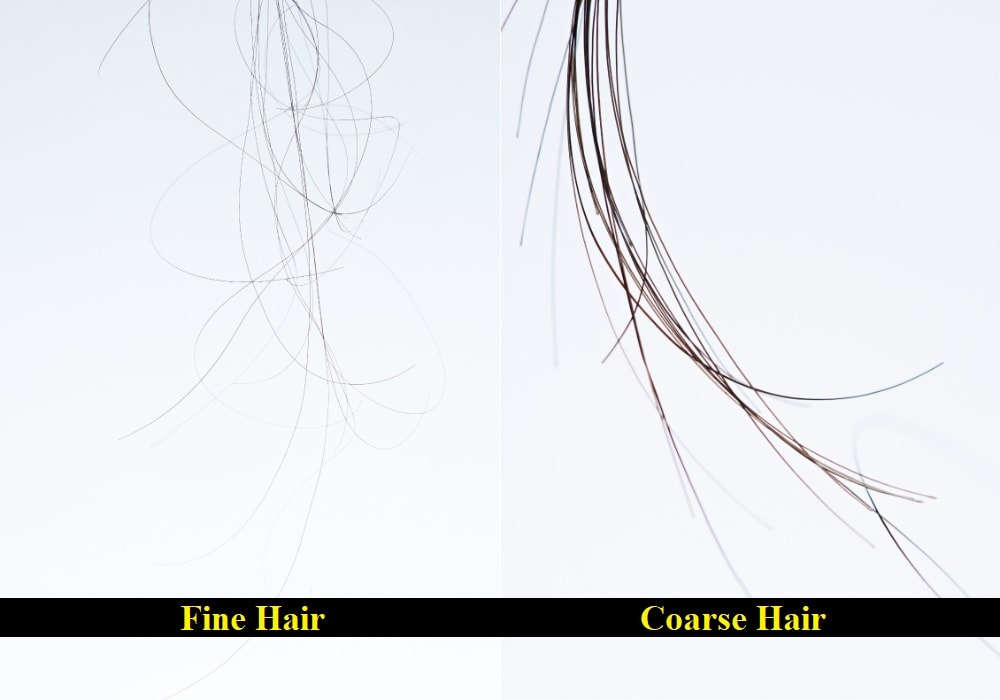
How to spot the difference
Determining your hair type Helps you know what type of products will benefit you in the long run. It also lets you know the health status of your hair.
So, if determining the width of your hair type is essential, how do you know it? The difference between fine hair and coarse hair?
There are different ways you can determine which type you have, but if you want to be absolutely sure, this is it Fine hair versus coarse hair The guide will help you distinguish between the two types of hair.
What is thin hair?

nice hair It is a hair type with minimal to no thick hair strands. Fine hair usually has a smaller diameter than if it were coarse.
However, it is important to note that fine hair is significantly different from fine hair because fine hair is not measured in dense growth. So while you can have thin hairYour hair fibers can be fine.
What problems accompany thin hair?
One major problem with thin hair is the risk of hair breakage. Hair breakage is when your hair strands break or split, reducing the health of your hair as it eventually becomes frayed.
Sometimes this may occur due to excessive bleaching, Tough styling, submerging or more. You can always fix it with a mild shampoo, yogurt or avocado and Minimizing heat.
How do you maintain thin hair?
Now, when it comes to maintaining fine hair, there are several ways to manage the maintenance. Some of them include the following:
- Brushing hair twice: Brushing your hair twice a day is a perfect method to boost its health by allowing natural oils to envelop your strands and increase blood circulation. However, only brush for a minute and twice a day, as excessive brushing can lead to split ends.
- Protein mask combination: This is another method of maintaining fine hair. Applying a solution of yogurt or egg white helps to moisturize the strands of hair and strengthen the roots.
- Combine additives and fruits: Combining food supplements and fruits in your diet can help improve hair health significantly. Some examples include vitamins, minerals, apples, oranges, apricots and more.
What is coarse hair?

Coarse hair Refers to a type of hair with a thicker diameter. This is what coarse contrasts with fine hair. Some are often mistaken for curly or Frizzy hair For rough, which is not the case.
The significant difference is that all the layers of the hair are divided equally unlike the other types of hair. Coarse hair is really thicker than typical fine hair.
What problems accompany coarse hair?
One of the main problems that come with coarse hair is frizz. It usually tends to dry out faster than fine hair, which can also lead to breakage.
Fortunately, once you determine whether or not you have coarse hair, you can look for specific hair products that help help with that particular issue.
How do you maintain coarse hair?
There are several ways to maintain coarse hair. Some include deep conditioning masks, limiting heat styling time and incorporating protective hairstyles to reduce the risk of weather or outside elements damaging your hair.
It is essential to maintain moisture when you have this type of hair.
What do fine hair and coarse hair look like?

There is a significant difference in what fine and coarse hair looks like. For example, fine hair is often mistaken for fine hair, and the difference in determining fine hair is that they usually have thicker strands.
As mentioned earlier, you can spot coarse hair by checking the diameter of the hair strands; If the diameter is more than 120 micronsSo it’s rough.
When comparing fine hair versus coarse hair, another way to tell the difference is in feel. For example, take a strand of hair between your thumb and forefinger and gently roll it back and forth.
If it feels rough and stiff, then it’s rough. On the other hand, if it is barely noticeable and feels fragile, then it is thin.
The main differences between fine hair and coarse hair
Besides diameter, there are other factors to consider when distinguishing between fine and coarse hair. Some of them include the following:
|
nice hair |
Coarse hair |
|
|
hair diameter |
50 microns or less |
120 microns or more |
|
hair pores |
High |
low |
|
Hair density |
low |
High |
|
Hair flexibility |
low |
High |
|
hair texture |
soft and silky | Wavy, curly, coiled or straight |
| Scalp moisture | Normal to oily |
Normal to dry |
Here’s a deeper look at these factors:
- hair diameter: This is the main factor that determines the difference between fine and coarse hair. Generally, coarse hair is 120 microns or more, and fine hair is 50 microns or less.
- hair pores: This factor determines whether your hair can absorb moisture. Fine hair usually has no problem absorbing a significant amount, while coarse hair may struggle to hold it back.
- Hair Density: This factor measures the density of the hair. Fine hair usually has low density because it is fine and thin, while coarse hair is thick and textured.
- hair elasticity: Hair elasticity determines whether or not your hair strands can break easily when stretched. Fine hair generally has low elasticity, while coarse hair has high elasticity.
- Hair texture: Fine hair texture is usually soft and silky, while coarse can appear wavy, curly, coiled or straight.
- Scalp moisture: Determining what type of scalp you have tells you what type of products to use. Thin hair is normal or oily scalp due to oil absorption. Coarse hair is usually normal or dry.
So how do you tell the difference between fine and coarse hair?
How do you tell the difference between fine and coarse hair? There are several ways to determine this, but it is important to consider their diameter when distinguishing between the two.
Knowing if you have one of your hair types is essential as it helps determine which products to combine. We hope you enjoyed reading this article!